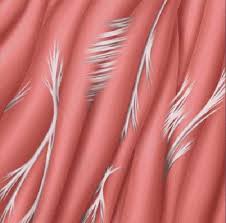 We all probably know someone that suffers from migraines. That someone may be you. This article is to define migraines and then to inform about some alternative therapies have helped others. The National Institute of Health writes:
We all probably know someone that suffers from migraines. That someone may be you. This article is to define migraines and then to inform about some alternative therapies have helped others. The National Institute of Health writes:
“Migraines affect about 12 percent of the U.S. population and are more common in women than men (although childhood migraines are more common among boys). Symptoms of migraine headaches typically include throbbing or pulsing pain on one side of the head, nausea, vomiting, and sensitivity to light and sound. Migraines are generally of moderate to severe pain. If a migraine occurs more than 15 days each month for about 3 months, it’s considered chronic. The two most common types of migraine are:
- Migraine with aura (visual disturbances or other symptoms such as trouble speaking, numbness, muscle weakness on one side of the body, confusion, or a tingling sensation in the hands or face that appears before the actual headache and usually lasts less than an hour).
- Migraine without aura. This type of headache can often be confused with a tension-type headache.”
- Many people who have migraines report that their headaches are triggered by certain conditions or substances such as:
- Environment (weather changes, exposure to bright light, high altitude, smoke, certain odors, and prolonged loud noise)
- Diet (chocolate, garlic, pickled products, processed meats and fish, aged cheese, alcohol—especially wine, or caffeine withdrawal)
- Other factors (exertion, too much sleep, fatigue or exhaustion, irregular motion such as amusement rides or boats, stress, or hormonal changes).”
An article from the Mayo Clinic states: “Nontraditional therapies may be helpful if you have chronic migraine pain:
- Acupuncture. In this treatment, a practitioner inserts many thin, disposable needles into several areas of your skin at defined points. Clinical trials have found that acupuncture may be helpful for headache pain.
- Biofeedback. Biofeedback appears to be effective in relieving migraine pain. This relaxation technique uses special equipment to teach you how to monitor and control certain physical responses related to stress, such as muscle tension.
- Massage therapy. Massage therapy may help reduce the frequency of migraines. Researchers continue to study the effectiveness of massage therapy in preventing migraines.
- Cognitive behavioral therapy. Cognitive behavioral therapy may benefit some people with migraines.
- Herbs, vitamins and minerals. There is some evidence that the herb butterbur may prevent migraines or reduce their severity. Another herb, feverfew, may help prevent migraines, but it has shown mixed results in studies. A high dose of riboflavin (vitamin B-2) also may prevent migraines or reduce the frequency of headaches.Coenzyme Q10 supplements may decrease the frequency of migraines, but they have little effect on the severity of the headache.Due to low magnesium levels in some people with migraines, magnesium supplements have been used to treat migraines, but with mixed results.Ask your doctor if these treatments are right for you. Don’t use feverfew, riboflavin or butterbur if you’re pregnant or without first talking with your doctor.”
Trisha Schmalhofer, LMT and CranioSacral Therapist
